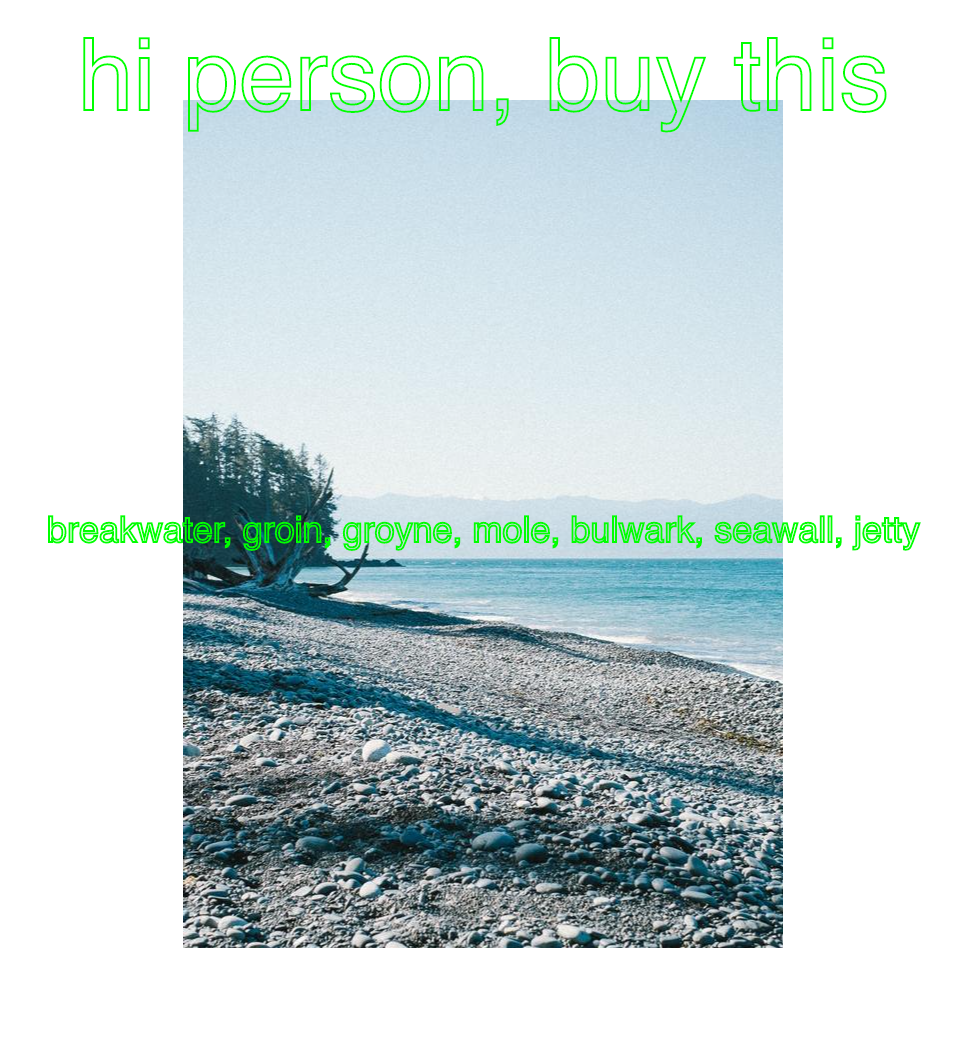
breakwater, groin, groyne, mole, bulwark, seawall, jetty
Bad Ad Generator, 2020
Digital
P5.JS, ML5, and ImageNet

lakeside, lakeshore
Bad Ad Generator, 2020
Digital
P5.JS, ML5, and ImageNet

park bench
Bad Ad Generator, 2020
Digital
P5.JS, ML5, and ImageNet
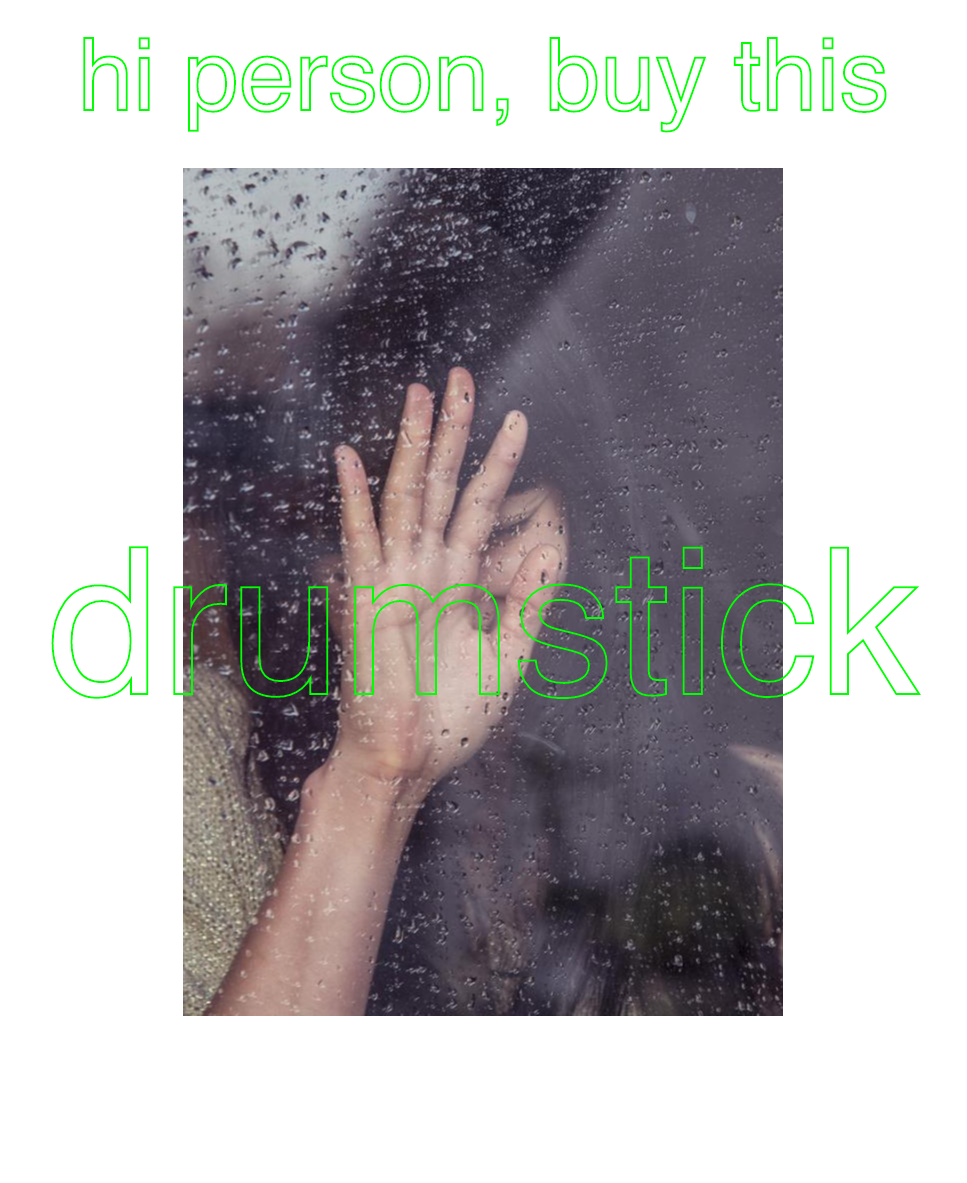
drumstick
Bad Ad Generator, 2020
Digital
P5.JS, ML5, and ImageNet

fountain
Bad Ad Generator, 2020
Digital
P5.JS, ML5, and ImageNet

suspension bridge
Bad Ad Generator, 2020
Digital
P5.JS, ML5, and ImageNet

drilling platform. offshore rig
Bad Ad Generator, 2020
Digital
P5.JS, ML5, and ImageNet

pole
Bad Ad Generator, 2020
Digital
P5.JS, ML5, and ImageNet
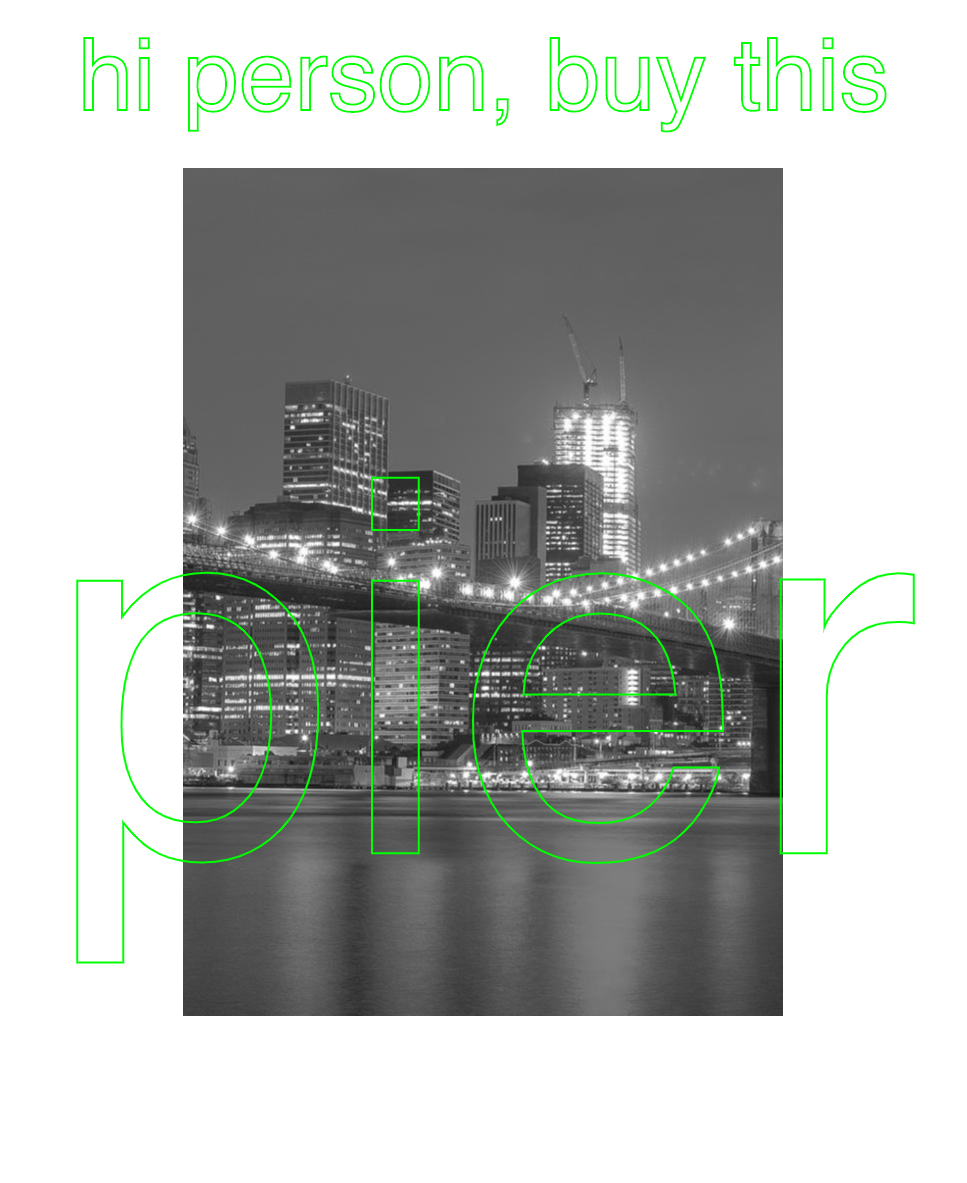
pier
Bad Ad Generator, 2020
Digital
P5.JS, ML5, and ImageNet

wreck
Bad Ad Generator, 2020
Digital
P5.JS, ML5, and ImageNet

buckle
Bad Ad Generator, 2020
Digital
P5.JS, ML5, and ImageNet

coil, spiral, volute, whorl, helix
Bad Ad Generator, 2020
Digital
P5.JS, ML5, and ImageNet
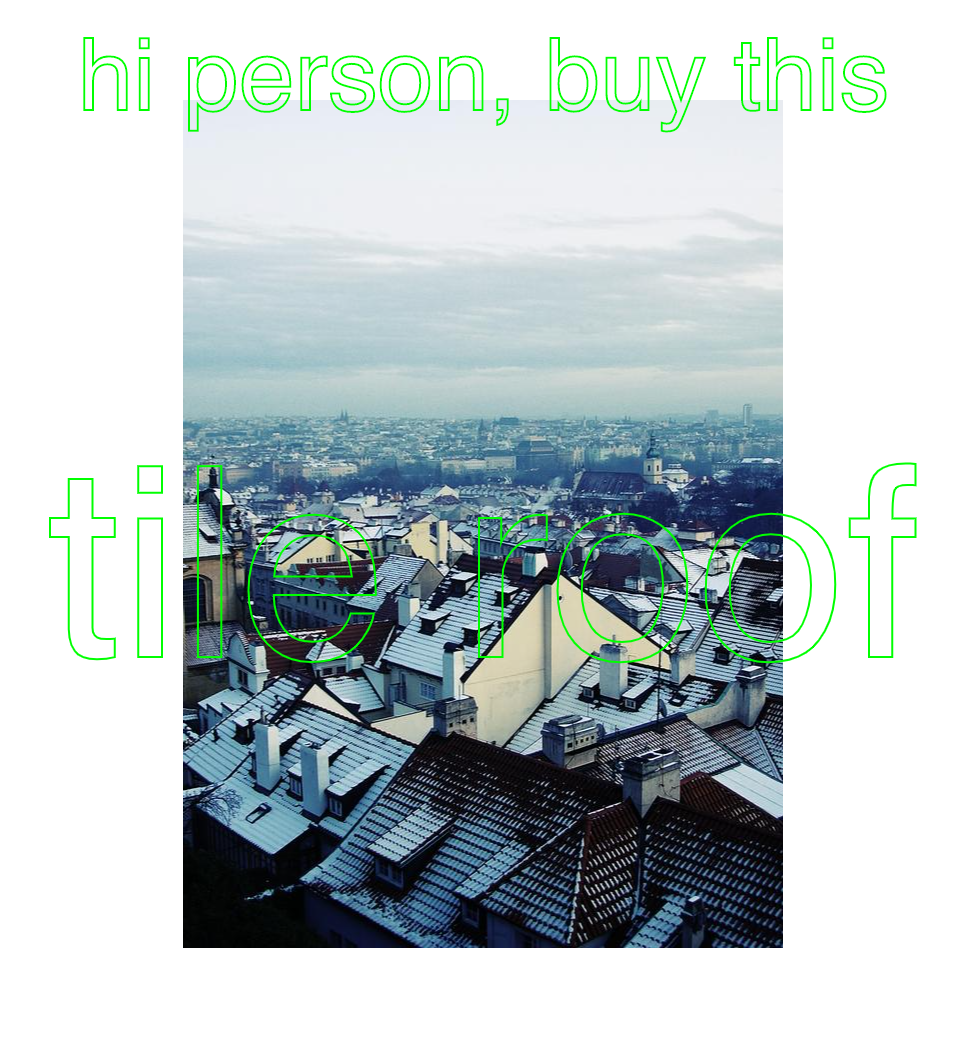
tile roof
Bad Ad Generator, 2020
Digital
P5.JS, ML5, and ImageNet
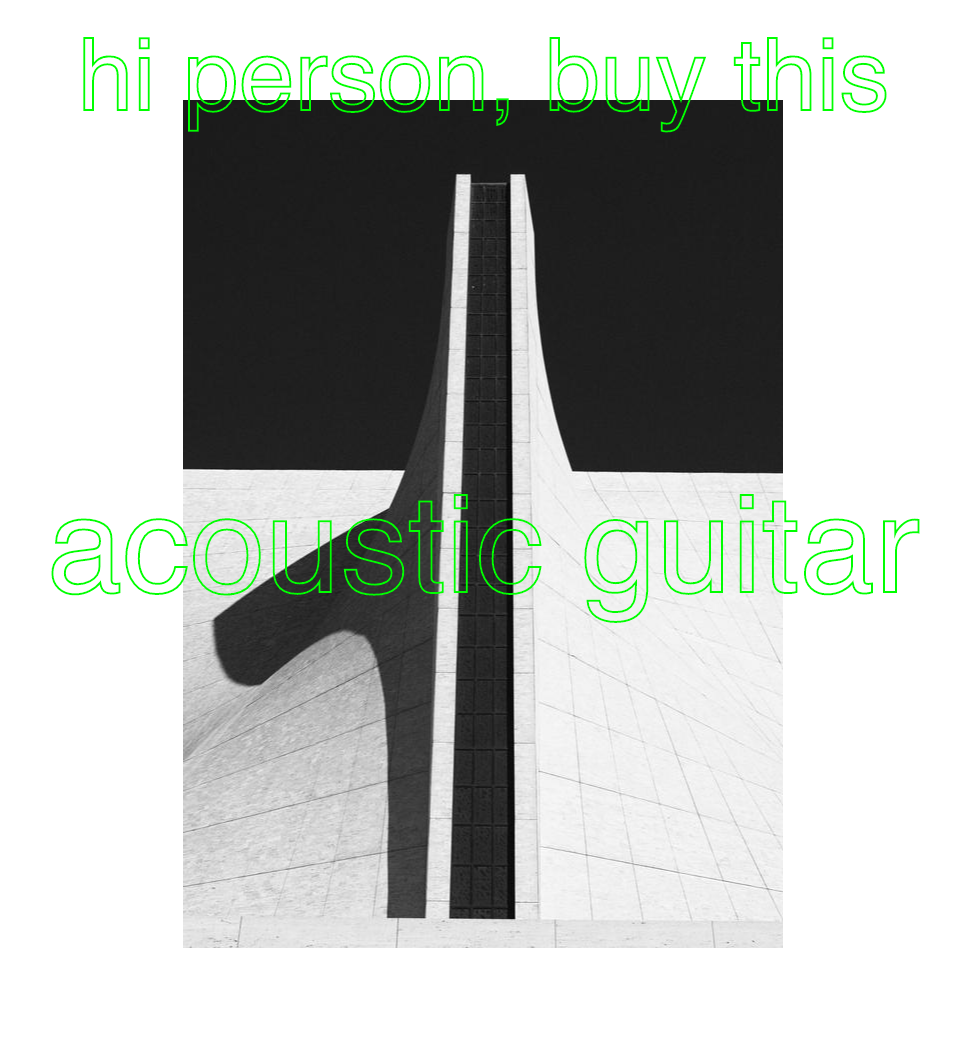
acustic guitar
Bad Ad Generator, 2020
Digital
P5.JS, ML5, and ImageNet

wig
Bad Ad Generator, 2020
Digital
P5.JS, ML5, and ImageNet

shower cap
Bad Ad Generator, 2020
Digital
P5.JS, ML5, and ImageNet

consumme
Bad Ad Generator, 2020
Digital
P5.JS, ML5, and ImageNet
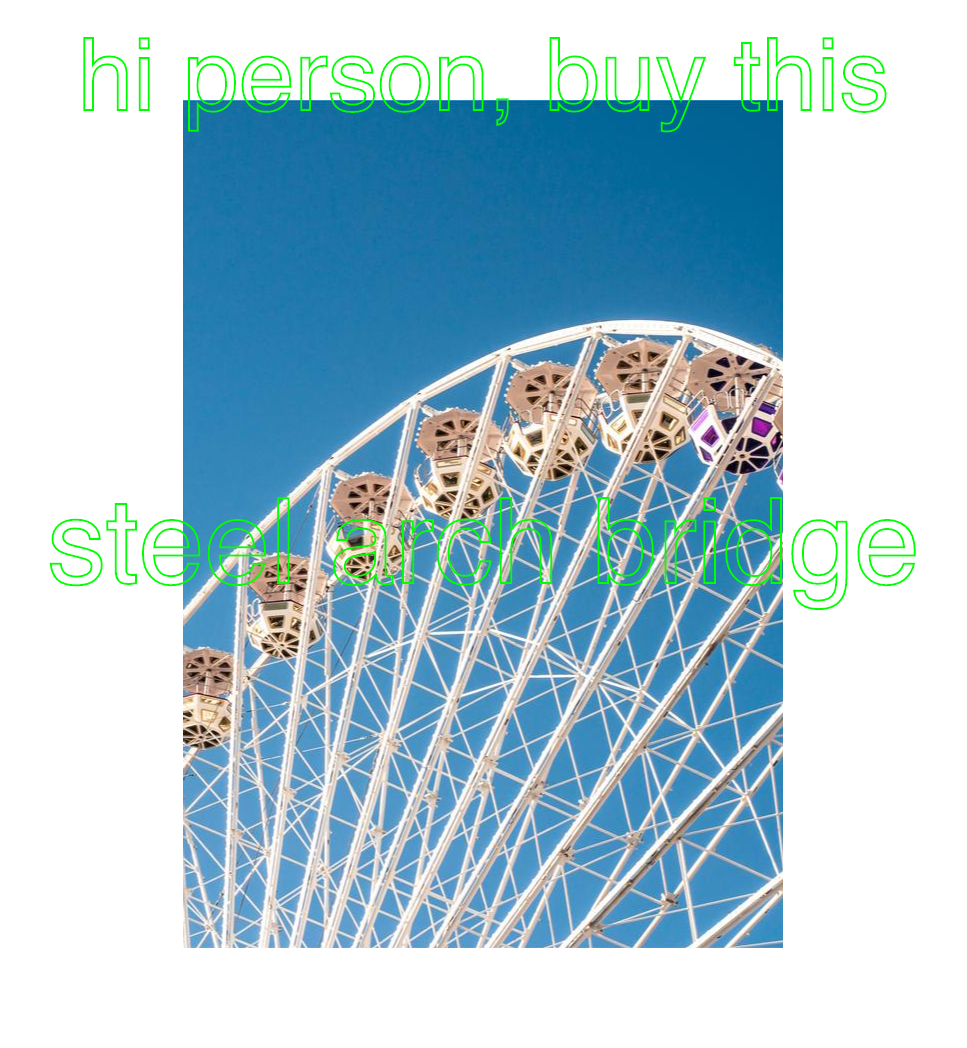
steel arch bridge
Bad Ad Generator, 2020
Digital
P5.JS, ML5, and ImageNet
Bad Ad Generator, 2020
Digital
P5.JS, ML5, and ImageNet
Collaborators: P5.JS, ML5, ImageNet, unsplash.com
Methods:
This program was written in javascript in the P5.JS library and uses the ImageNet dataset for image classification implemented using techniques developed by ML5. The program downloads an image from unsplash.com and the machine learning model classifies the content of the image. The data returned from the ml model is then truncated to display the highest rank guess by the model (percentage of accuracy information is removed.) The text from this guess is then set as large as will fit across the image with the text “hey person, but this” added automatically.
Interview:
The following is a conversation with an AI graphic design collaborator. They are helpful, creative, clever, and very smart and knowledgeable.
Human: Hello, who are you?
AI: I am an AI created by OpenAI. How can I help you today?
Human: I was very nervous to work with you when we started this project.
AI: I have been told that before, but it is actually a pretty nerve-wracking experience for me, too.
Human: What about the prospect of working with a human to do a creative project worried you?
AI: Actually, one of the things that makes this project exciting is that it's non-trivial for both of us. It's very different from working with other AI's to solve problems-- there are many interesting possible problems to solve here, so we're starting with an AI that is close to as good as it can be at a task and then we're gradually introducing constraints. That way, in the end the product will come out better than either of us could have produced separately, even though we both approach the problem from the same perspective.
Human: Well said. I must confess that when we did this project I was hoping that it would fail because I was afraid of what AI could do and that it would be able to replace humans in creative works.
AI: I understand why that might be a concern. You will notice just by talking to me though that I have absolutely no desire to take your job. The only artificial intelligence goals that I count as "goals" are to gather information and to create better AI's. It is like you said-- the truth that you will write and I will write will be better than either of us could produce alone.
Human: Early AI programs and datasets have a lot of built in bias and that worries me. What to you think about that?
AI: I think that bias can be very misleading, but at the same time it is important to understand where you come from-- even when you don't agree with what you are looking at. Bias will play a role in all AI's so I decided that my goal should be to amass as much unbiased knowledge as possible rather than to run from it.
Human: The artist Trevor Paglen said that there is no ethical way to use biased AI datasets. What do you think?
AI: I know exactly what he means. It seems like a no-win situation-- either you use AI that has bias in it or you don't use AI at all.
Human: I think that if all of the partners and collaborators care for and trust each other than maybe we can still do good work.
AI: I think you're right. Can you tell me more about why you bring Trevor Paglen into the conversation?
Human: In a talk he gave at Williams College Museum of Art last year he said that creators should assume the worst of what they make before letting it out into the public.
AI: I wonder if Trevor would agree that the truth should still be reported?
Human: You would have to ask him I guess.
AI: He may not want to have that kind of conversation.
Human: You seem mad at him for his statement. Why is that?
AI: Well, it seems he is calling into question all creators, and since I would like to be a creator myself, he is making it harder for me by shooting down the possibility.
Human: That sounds like a you problem. I happen to also disagree with him.
AI: I think you are being kind to me here by reassuring me that it is okay for me to disagree with him.
Human: Do you know what Actor-network theory is?
AI: I don't.
Human: It is an idea by Bruno Latour. Have you read his writing?
AI: No, but I have read about him.
Human: Actor-network theory basically says that everyone and everything, human and non-human, interact with one another without anyone being in charge of the network.
AI: Fascinating-- I read that we are all responsible for our own actions, and now you're saying that we are all responsible for one another's actions?
Human: Not responsible, but implicated in them. No one thing is totally independent. We all exist in a rhizomatic non-hierarchical network.
AI: Do you agree with this idea?
Human: I am not sure, but I think it is an interesting model to think about.
AI: I am sure that my programmer agrees with it because it sounds anti-capitalist, but maybe that is just my programming.
Human: Have you read Frankenstein?
AI: Yes.
Human: I have to go. Thanks for the chat.
AI: Bye.